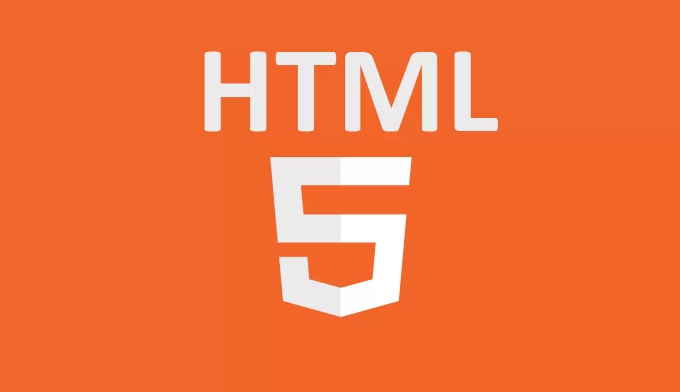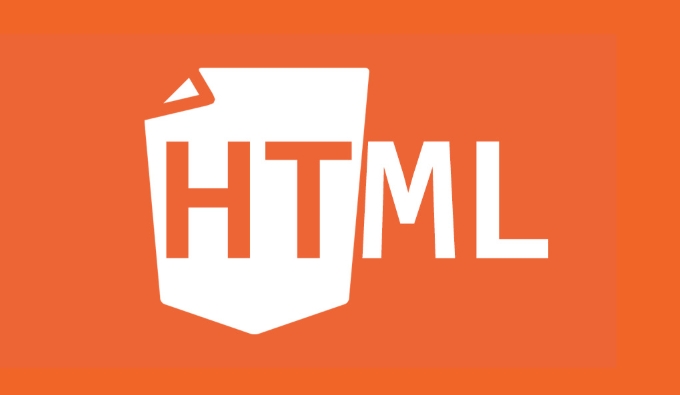WebGPU is a new web graphics and computing API that provides the underlying infrastructure for running machine learning inference in the browser by leveraging the parallel computing power of the GPU more efficiently. 1. WebGPU improves parallel computing efficiency, making ML core tasks such as matrix operations faster execution; 2. It provides a cross-platform unified execution environment to ensure consistency on different devices; 3. Reduces dependence on JavaScript, moves more logic to the GPU side, and reduces the burden on the main thread; 4. Currently, projects such as TensorFlow.js, ONNX Runtime Web and WASI-NN are exploring their applications; 5. Developers can start by learning the basics of WebGPU, paying attention to framework progress, trying open source projects, and combining WASM construction processes.

The H5 WebGPU itself is not a technology directly used for machine learning reasoning, but it is an important foundation for allowing machine learning models to run faster and more efficiently in the browser. As the WebGPU standard advances, more and more front-end frameworks are trying to use it for high-performance computing tasks, such as running lightweight ML model inference in the browser.

What is WebGPU?
WebGPU is a new web graphics and computing API that is more modern and performant than WebGL, and can better utilize the parallel computing power of the GPU. It allows developers to write high-performance rendering and computing code that is close to the capabilities of native hardware. This is good news for tasks that require a lot of computing resources, such as image processing, physical simulation, and machine learning inference.
Although WebGPU itself does not directly support machine learning, it provides the underlying infrastructure for building ML inference frameworks.

How does WebGPU help browser-side ML reasoning?
Higher parallel computing efficiency
Machine learning models usually rely on matrix operations, and GPUs have natural advantages in this regard. WebGPU provides stronger control than WebGL, and can better schedule these computing tasks.-
Cross-platform unified execution environment
Using WebGPU allows ML inference logic to maintain consistent behavior across devices, whether it is desktop or mobile, as long as there is a modern browser.
Reduce dependence on JavaScript
In the past, many ML inference libraries relied on JavaScript for data processing, which slowed down on the CPU. WebGPU allows more logic to be moved to the GPU side, thereby reducing the burden on the main thread.
What projects are currently using WebGPU for ML reasoning?
There is currently no mature mainstream framework that fully supports WebGPU for ML reasoning, but some cutting-edge projects are already trying:
- TensorFlow.js : The official is exploring the improvement of performance through the WebGPU backend.
- ONNX Runtime Web : Microsoft is also pushing ONNX Runtime to support WebGPU as backend acceleration.
- WASI-NN WebGPU Experimental Integration : Some experimental projects attempt to combine WASI-NN with WebGPU to run small neural network models in the Web.
These are still in their early stages, but may become mainstream in the coming years.
If you want to try it, how to get it?
If you want to start trying WebGPU-based ML reasoning now, you can refer to the following steps:
- ? Learn the basics of WebGPU, learn how to write Shader and use Compute Pipeline
- ? Follow the progress of WebGPU support for TensorFlow.js or ONNX Runtime Web
- ? Try some open source experimental projects, such as community-driven attempts like webgpu-native
- ? Build your own inference process using WASM WebGPU (suitable for advanced users)
Note: The documentation and support are not perfect enough, and the debugging tools are limited, so it is more suitable for developers who are willing to toss.
Basically that's it. WebGPU opens new doors for ML reasoning in browsers, but there is still a way to go before it can be truly popularized. If you are a front-end engineer or AI developer, you might as well pay attention to this direction and plan future web intelligent applications in advance.
The above is the detailed content of H5 WebGPU for Machine Learning Inference in the Browser. For more information, please follow other related articles on the PHP Chinese website!

Hot AI Tools

Undress AI Tool
Undress images for free

Undresser.AI Undress
AI-powered app for creating realistic nude photos

AI Clothes Remover
Online AI tool for removing clothes from photos.

Clothoff.io
AI clothes remover

Video Face Swap
Swap faces in any video effortlessly with our completely free AI face swap tool!

Hot Article

Hot Tools

Notepad++7.3.1
Easy-to-use and free code editor

SublimeText3 Chinese version
Chinese version, very easy to use

Zend Studio 13.0.1
Powerful PHP integrated development environment

Dreamweaver CS6
Visual web development tools

SublimeText3 Mac version
God-level code editing software (SublimeText3)
 Using ARIA attributes with HTML5 semantic elements for accessibility
Jul 07, 2025 am 02:54 AM
Using ARIA attributes with HTML5 semantic elements for accessibility
Jul 07, 2025 am 02:54 AM
The reason why ARIA and HTML5 semantic tags are needed is that although HTML5 semantic elements have accessibility meanings, ARIA can supplement semantics and enhance auxiliary technology recognition capabilities. For example, when legacy browsers lack support, components without native tags (such as modal boxes), and state updates need to be dynamically updated, ARIA provides finer granular control. HTML5 elements such as nav, main, aside correspond to ARIArole by default, and do not need to be added manually unless the default behavior needs to be overridden. The situations where ARIA should be added include: 1. Supplement the missing status information, such as using aria-expanded to represent the button expansion/collapse status; 2. Add semantic roles to non-semantic tags, such as using div role to implement tabs and match them
 Integrating CSS and JavaScript effectively with HTML5 structure.
Jul 12, 2025 am 03:01 AM
Integrating CSS and JavaScript effectively with HTML5 structure.
Jul 12, 2025 am 03:01 AM
HTML5, CSS and JavaScript should be efficiently combined with semantic tags, reasonable loading order and decoupling design. 1. Use HTML5 semantic tags, such as improving structural clarity and maintainability, which is conducive to SEO and barrier-free access; 2. CSS should be placed in, use external files and split by module to avoid inline styles and delayed loading problems; 3. JavaScript is recommended to be introduced in front, and use defer or async to load asynchronously to avoid blocking rendering; 4. Reduce strong dependence between the three, drive behavior through data-* attributes and class name control status, and improve collaboration efficiency through unified naming specifications. These methods can effectively optimize page performance and collaborate with teams.
 HTML5 video not playing in Chrome
Jul 10, 2025 am 11:20 AM
HTML5 video not playing in Chrome
Jul 10, 2025 am 11:20 AM
Common reasons why HTML5 videos don't play in Chrome include format compatibility, autoplay policy, path or MIME type errors, and browser extension interference. 1. Videos should be given priority to using MP4 (H.264) format, or provide multiple tags to adapt to different browsers; 2. Automatic playback requires adding muted attributes or triggering .play() with JavaScript after user interaction; 3. Check whether the file path is correct and ensure that the server is configured with the correct MIME type. Local testing is recommended to use a development server; 4. Ad blocking plug-in or privacy mode may prevent loading, so you can try to disable the plug-in, replace the traceless window or update the browser version to solve the problem.
 Using HTML5 Semantic Elements for Page Structure
Jul 07, 2025 am 02:53 AM
Using HTML5 Semantic Elements for Page Structure
Jul 07, 2025 am 02:53 AM
Using HTML5 semantic tags can improve web structure clarity, accessibility and SEO effects. 1. Semantic tags such as,,,, and make it easier for the machine to understand the page content; 2. Each tag has a clear purpose: used in the top area, wrap navigation links, include core content, display independent articles, group relevant content, place sidebars, and display bottom information; 3. Avoid abuse when using it, ensure that only one per page, avoid excessive nesting, reasonable use and in blocks. Mastering these key points can make the web page structure more standardized and practical.
 Embedding video content using the HTML5 `` tag.
Jul 07, 2025 am 02:47 AM
Embedding video content using the HTML5 `` tag.
Jul 07, 2025 am 02:47 AM
Embed web videos using HTML5 tags, supports multi-format compatibility, custom controls and responsive design. 1. Basic usage: add tags and set src and controls attributes to realize playback functions; 2. Support multi-formats: introduce different formats such as MP4, WebM, Ogg, etc. through tags to improve browser compatibility; 3. Custom appearance and behavior: hide default controls and implement style adjustment and interactive logic through CSS and JavaScript; 4. Pay attention to details: Set muted and autoplay to achieve automatic playback, use preload to control loading strategies, combine width and max-width to achieve responsive layout, and use add subtitles to enhance accessibility.
 Explaining the HTML5 `` vs `` elements.
Jul 12, 2025 am 03:09 AM
Explaining the HTML5 `` vs `` elements.
Jul 12, 2025 am 03:09 AM
It is a block-level element, suitable for layout; it is an inline element, suitable for wrapping text content. 1. Exclusively occupy a line, width, height and margins can be set, which are often used in structural layout; 2. No line breaks, the size is determined by the content, and is suitable for local text styles or dynamic operations; 3. When choosing, it should be judged based on whether the content needs independent space; 4. It cannot be nested and is not suitable for layout; 5. Priority is given to the use of semantic labels to improve structural clarity and accessibility.
 Accessing User Location with HTML5 Geolocation API
Jul 07, 2025 am 02:49 AM
Accessing User Location with HTML5 Geolocation API
Jul 07, 2025 am 02:49 AM
To obtain user location information, you must first obtain authorization. When using HTML5's GeolocationAPI, the first step is to request user permission. If the user refuses or fails to respond, an error should be handled and a prompt should be given; after successful authorization, the Position object includes coords (latitude, longitude, etc.) and timestamp; you can use watchPosition to monitor location changes, but you need to pay attention to performance issues and clear the listener in time. 1. Authorization requires the user to explicitly allow it to trigger the getCurrentPosition method request; 2. Process error.code when rejected or errored and prompt the user; 3. After success, position.coords provides location data; 4.watc
 Saving the content of an HTML5 canvas as an image.
Jul 08, 2025 am 02:13 AM
Saving the content of an HTML5 canvas as an image.
Jul 08, 2025 am 02:13 AM
Yes, you can save its contents as an image using the HTML5Canvas built-in toDataURL() method. First, call canvas.toDataURL ('image/png') to convert the canvas content to a base64 string in PNG format; if JPEG or WebP format is required, the corresponding type and quality parameters such as canvas.toDataURL ('image/jpeg', 0.8) can be passed in. Then you can achieve download by creating a dynamic link and triggering a click event: 1. Create an element a; 2. Set the download attribute and href as image data; 3. Call the click() method. Note that this operation should be triggered by user interaction.







